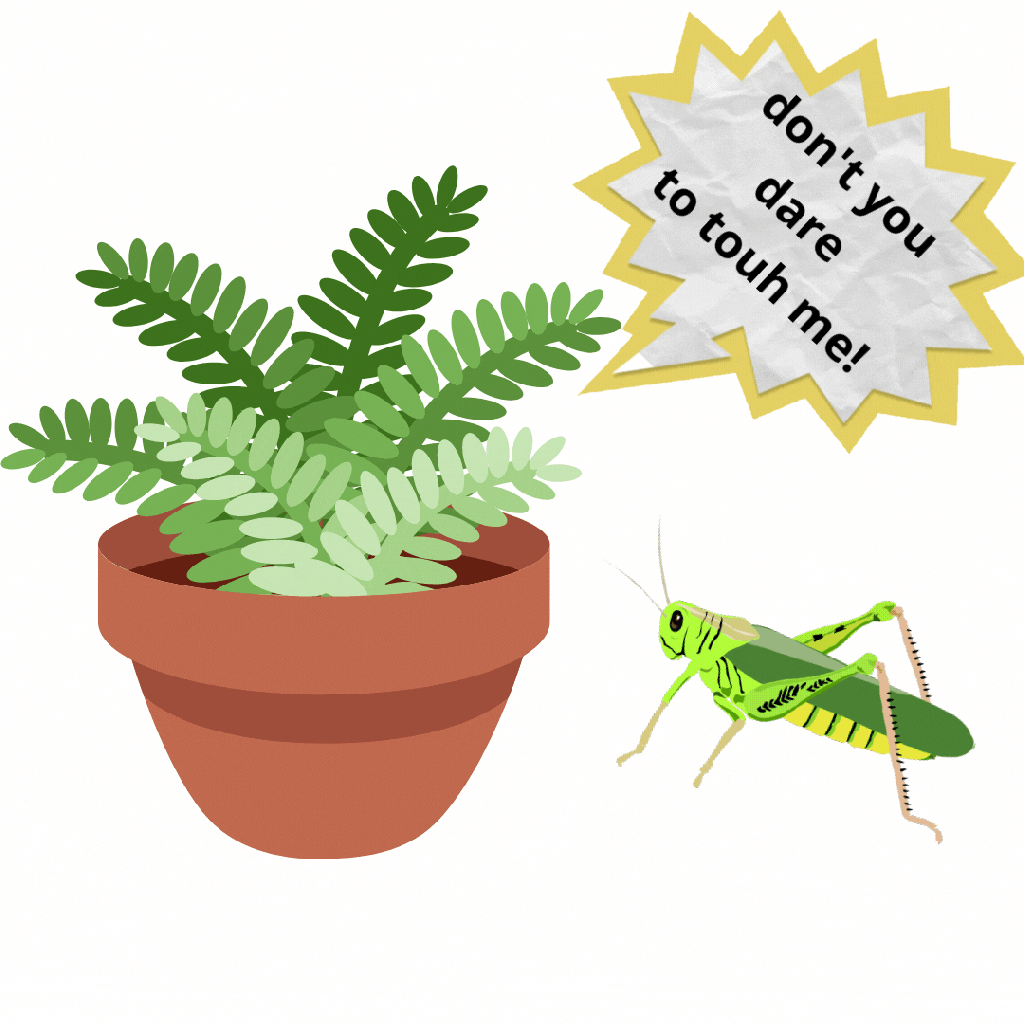It was a normal science class that day, in the last week. We were learning about control and coordination in plants. And that's when I learnt why touch me not( Mimosa Pudica) plant closes its leaves. It was a great class, although it left me with thousands of more questions. To answer some of these questions, I had to look further than the textbook. And now, here I am with some more interesting things I learnt about 'Response to stimuli in plants'.

You might have seen this plant near your households. Or, you might have heard of this plant. When I was a small child, we used to pluck the pink fluffy flowers of Mimosa Pudica, and play with it. (Note :Mimosa Pudica is the scientific name of this plant . ) So, back to the questions. How do they fold their leaves? Do they have brains to tell them to do so? Certainly, they don't.
Scientists says this plant is native to South and Central America. And this is not the only plant which responses to movement. Many plants in Mimosa Family behaves like this. In 300 BC, Theophrastus, who was a student of Aristotle and was a plant biologist mentioned it. According to many, he may have seen Mimosa Aspera , another plant in the Mimosa family. The behaviour of Mimosa Pudica is called Thignomonasty - means an immediate response to the stimuli or Rapid plant movement. Some examples for rapid plant movement are Venus flytrap and some carnivorous plants. If the thigmonanasty is due to heat, then it is thermomonasty. Similarly, If it is due to
- light : Photomonasty
- day and night variations : Nyctinasty ( lotus may be an example)
So, how do mimosa pudica performs Thigmonasty : The plant uses a simple trick. In plant cells, the water present in it, helps to make the leaves face upwards. What if it loses the water? It loses the pressure to stand. In other words, we can call this as Osmosis. The pressure that water creates is called Turgor Pressure. But how do it removes the water? It sends ions of different chemicals which can make the water to disappear, to the cells. This water removal is created by the help of Pulvin,( which changes the leaf's orientation or position) which is usually under the leaves.
Why? : It may have been evolved like this to self-defend against insects or any other predator. Mostly,this plant grows, where disturbance is high. Like, near roadsides, near buildings, households etc. So it must be able protect itself. Because in nature, the first rule of survival is defence. And afterall, to survive , it evolved such trait. And if the plant help the leaves open, the leaves will cover the hidden thorns under it. So, when we touch it, or when some insect try to eat it, it folds the leaves and make the thorns stand up, which might be the defence action.

Monica Gagliano, a researcher from University of western Australia did a simple experiment. She kept putting water drops continuously on the touch-me-not plant (Mimosa Pudica) and found that the plants stopped covering their leaves after some time, as they learned water drops aren’t harmful. Because, the signaling from the plant was stopped. And this memory lasted for nearly a month. But where do they collect all the memories? No one knows the answer. But it proved that plants can actually learn. ( I think I mentioned this experiment in another blog post too)
Bio engineers are saying that, if we use this mechanism in the robotics, then we may actually create shape shifting robots and more! It would be interesting!
Another similar plant is venus flytrap. I think I don't need to say more. But the mechanism is quite different in it. It really behaves like it is some sort of robot. There are three hair like stimuli things in the cage. So when an insects get into the trap, the insect will touch the hairs. But the plant wait for 20 seconds and see whether the insect is there or not. ( seems like it experienced a lot of pranks by people like me! I always tickle the trap with some leaf or something and makes the trap to close, without giving any insect😅 ) Because when a trap closes, with or without insects, it takes 24 to 48 hours to reopen. And it takes a lot of energy, which the plant cannot afford. So it has this trick. Pretty smart. Isn't is? The signals works same as Mimosa Pudica, afterall. Only the use of those signal is different.
No one knows how they store the memory. But we know how they works. I hope we can use these mechanisms in the technologies and create more efficient structures. Who knows? someday we might see the shape shifting robots which are inspired by Mimosa Pudica! Or we may also discover how the plants store memory, one day ....


This was so informative Vanya! Great post :)
ReplyDeletethanks Maya
DeleteI agree that this was very interesting! I have seen and heard of this plant before in TV commercials many years ago. Venus flytraps (carnivorous plants in general) also fascinate me. Perhaps I should look into getting a "touch-me-not" plant for my room... ;)
ReplyDeleteThanks for reading!
Delete